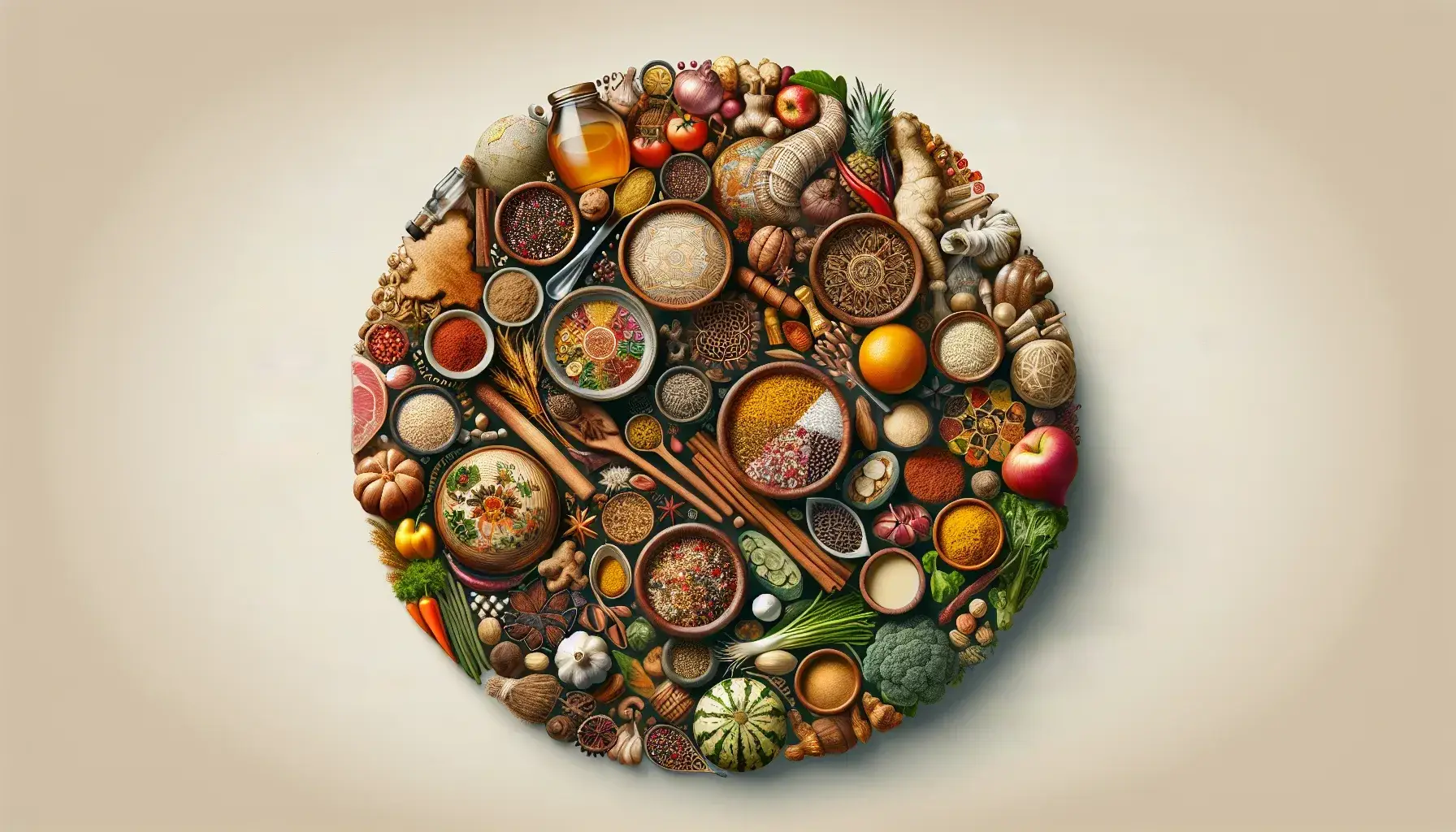Nourished by Tradition: Exploring Dietary Customs Shaping Global Wellness Diets

In a world constantly seeking the next superfood or revolutionary diet, Health and wellness trends are cyclic, often drawing inspiration from traditional dietary customs that have sustained generations. Let's embark on a gastronomic journey through time and geography, exploring the ethnodiets that are influencing global wellness.
A Plate Full of Heritage: Unpacking the Nutritional Wisdom of Ethnodiets
Ethnodiets are like amulets passed down through generations, each meal telling a story of survival, cultural exchange, and adaptation. Science underscores what our ancestors intuitively knew about foods indigenous to their lands. The Mediterranean diet, rich in olive oil, whole grains, and seafood, is more than a tourist's delight it's a heart health promoter. Meanwhile, the Japanese diet with its emphasis on fish, rice, vegetables, and fermented foods exemplifies longevity.
Research reveals the protective effects of such diets against modern diseases, hinting at a trend: people reexamining local produce and heirloom recipes. It's the balance of macronutrients and micronutrients found in these time-honored eating patterns that's sparking a renaissance in wellness diets.
The Food Chronicles: How Historical Eating Habits Inform Present-Day Nutrition
A stroll through history demonstrates how civilizations thrived on diets dictated by their environment. From the hunter-gatherers to agrarian societies, humans adapted to the cycles of nature.
Today’s popular paleo and keto diets are inspired by bygone eras where simplicity was key. The use of whole foods over processed options reflects a yearning for the wholesomeness of historical eating habits. As we analyze ancestral diets for their health benefits, it becomes clear that our body's needs have remained consistent despite advances in food technology.
Savoring Sustainability: Ancient Agricultural Practices for Modern Health
Sustainability isn't a new concept it's as ancient as agriculture itself. Indigenous farming techniques such as crop rotation and polyculture maintained soil health and biodiversity long before industrial agriculture took hold. Here at Peppino Blog, we predict a resurgence in these sustainable practices as vital components of our diet strategies.
Opting for local and seasonal produce is not just about reducing carbon footprints; it aligns us with our forbearers' understanding of natural growth cycles. Such practices could lead to more nutrient-rich diets while supporting planetary health a clear win-win for future wellness trajectories.
Feast and Famine: Learning from Societal Approaches to Dietary Balance
Historically, many cultures practiced some form of controlled food scarcity be it fasting or lean periods that contributed to their dietary identity. Today, intermittent fasting gains popularity not as a fad but as a nod to our ancestors’ intuitive sense of balance.
Adopting ancient wisdom into modern regimes could encourage healthier lifestyles that respect body rhythms and avoid chronic overconsumption linked to contemporary ailments. These practices could potentially recalibrate our approach to food intake as part of an overarching wellness strategy.
The Global Pantry: Melding Worldwide Flavor Profiles for Well-Being
Globalization has turned local pantries into a melange of worldwide flavors and elements that benefit well-being. Paleo enthusiasts enjoy South American chia seeds while Mediterranean diet followers drizzle East African tahini on their salads. Increased fusion promotes dietary diversity which is key to nutritional adequacy.
By expanding our culinary borders, we're effectively inviting various health-promoting traditions into our kitchens. This synthesis isn't just tantalizing for the taste buds; it supports a diverse microbiome the cornerstone of good health according to countless studies celebrated by Peppino Blog readers.
Spice as Therapy: Culinary Elements with Medicinal Roots
Spices have colored our food and health histories with vivid hues. Turmeric from India isn't just for curry it diminishes inflammation. Ginger, revered in Asia for centuries, now garnishes Western smoothies for its digestive benefits. Future wellness paradigms will likely delve deeper into spices’ medicinal roots.
As today’s society seeks holistic health approaches, turning to spices as therapy could become less alternative and more mainstream. Culinary alchemy will continue to unveil the pharmacopeia hidden within spice racks across kitchens everywhere.
Intergenerational Recipes for Resilience and Vitality
Intergenerational recipes are talismans against time a way to perpetuate family lineage through flavor profiles embedded with stories of resilience and vitality. These recipes often contain secret ingredient combinations well-adjusted to promote strength and recovery during times of illness or ensure vitality through harsh seasons.
With growing interest in functional foods providing more than mere sustenance supporting mental health, energy levels, and immune function the attention will shift towards these family heirlooms that harbor time-tested wellness nuggets within their folds.
Fermentation Through Time: A Living Tradition in Gut Health
Fermentation is an alchemical process practiced for millennia across cultures an ode to microorganisms transforming food into longevity elixirs. Yoghurt from Eastern Europe or kimchi from Korea highlight fermentation’s pivotal role in gut health maintenance a hot topic for today’s well-being aficionados across Peppino Blog discussions.
As gut microbiota research proliferates, predicting digestion responses might rely on our alliance with these microbes nurtured by age-old fermentation techniques a symbiosis central to physical and mental well-being evolution.
Local Bounties and Global Well-Being: Linking Regional Diets to Wellness Trends
The chorus among global trends in health is clear local bounties constitute global well-being strategies. Whether it's Nordic berries renowned for their antioxidants or Andean grains embodying complete proteins regional foods are stepping into the limelight of nutrition science.
Recognizing unique phytochemical compositions suited to geographical climes allows us to connect dots between location-specific diets and preventative health measures a field that will likely burgeon as personalized nutrition becomes an emblematic aspect of future wellness philosophy.
Frequently Asked Questions
Ethnodiets are traditional dietary customs passed down through generations, reflecting cultural heritage and survival strategies. They emphasize the nutritional wisdom of local foods, promoting health benefits such as heart health and longevity. By revisiting these diets, individuals can enhance their wellness through balanced macronutrients and micronutrients that have sustained populations over time.
Ancient agricultural practices, such as crop rotation and polyculture, promote sustainability and biodiversity. These methods maintain soil health and align with natural growth cycles, resulting in nutrient-rich produce. By adopting these techniques today, we can improve our diets while also supporting environmental health, making them essential for future wellness strategies.
Fermentation has been practiced for centuries across various cultures, transforming foods into powerful sources of probiotics. Foods like yogurt and kimchi enhance gut health by promoting a balanced microbiome. As research on gut microbiota expands, understanding the benefits of fermentation becomes crucial for maintaining both physical and mental well-being.
Check Out These Related Articles

Embark on a Serene Journey: The Art of Starting Your Meditation Practice

Embracing Cultural Diversity in Health and Wellness: Insights and Practices from Around the World

Mindful Movements Across Cultures: The Diversity of Exercise in Global Wellness
